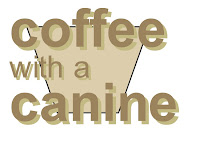Like many people, when browsing for something to read, I often choose a book based on its first lines. I suppose what I’m hoping to find is some immediate connection, either in subject matter or, more often, in the author’s “voice.” It doesn’t always work out, of course; sometimes those first lines are misleading, and the hoped-for connection isn’t actually there.About The Monkey's Voyage, from the publisher:
On the other hand, sometimes it works the other way around.
For the past couple of years, my wife, Tara, has been raving about Animal, Mineral, Radical, a collection of essays by B. K. Loren. As a result, several times I’ve picked up the book and read its opening lines: “Writing is listening,” Loren proclaims. “I have never believed writing has anything to do with having something to say.” And I’ve thought to myself, “That is really not me. I wrote a book precisely because I did have something to say.” And then I’ve put the book down.
But Tara kept raving about Loren’s book, so eventually I read on…and...[read on]
Throughout the world, closely related species are found on landmasses separated by wide stretches of ocean. What explains these far-flung distributions? Why are such species found where they are across the Earth?Visit The Monkey's Voyage website.
Since the discovery of plate tectonics, scientists have conjectured that plants and animals were scattered over the globe by riding pieces of ancient supercontinents as they broke up. In the past decade, however, that theory has foundered, as the genomic revolution has made reams of new data available. And the data has revealed an extraordinary, stranger-than-fiction story that has sparked a scientific upheaval.
In The Monkey’s Voyage, biologist Alan de Queiroz describes the radical new view of how fragmented distributions came into being: frogs and mammals rode on rafts and icebergs,tiny spiders drifted on storm winds, and plant seeds were carried in the plumage of sea-going birds to create the map of life we see today. In other words, these organisms were not simply constrained by continental fate; they were the makers of their own geographic destiny. And as de Queiroz shows, the effects of oceanic dispersal have been crucial in generating the diversity of life on Earth, from monkeys and guinea pigs in South America to beech trees and kiwi birds in New Zealand. By toppling the idea that the slow process of continental drift is the main force behind the odd distributions of organisms, this theory highlights the dynamic and unpredictable nature of the history of life.
In the tradition of John McPhee’s Basin and Range, The Monkey’s Voyage is a beautifully told narrative that strikingly reveals the importance of contingency in history and the nature of scientific discovery.
Writers Read: Alan de Queiroz.
--Marshal Zeringue





